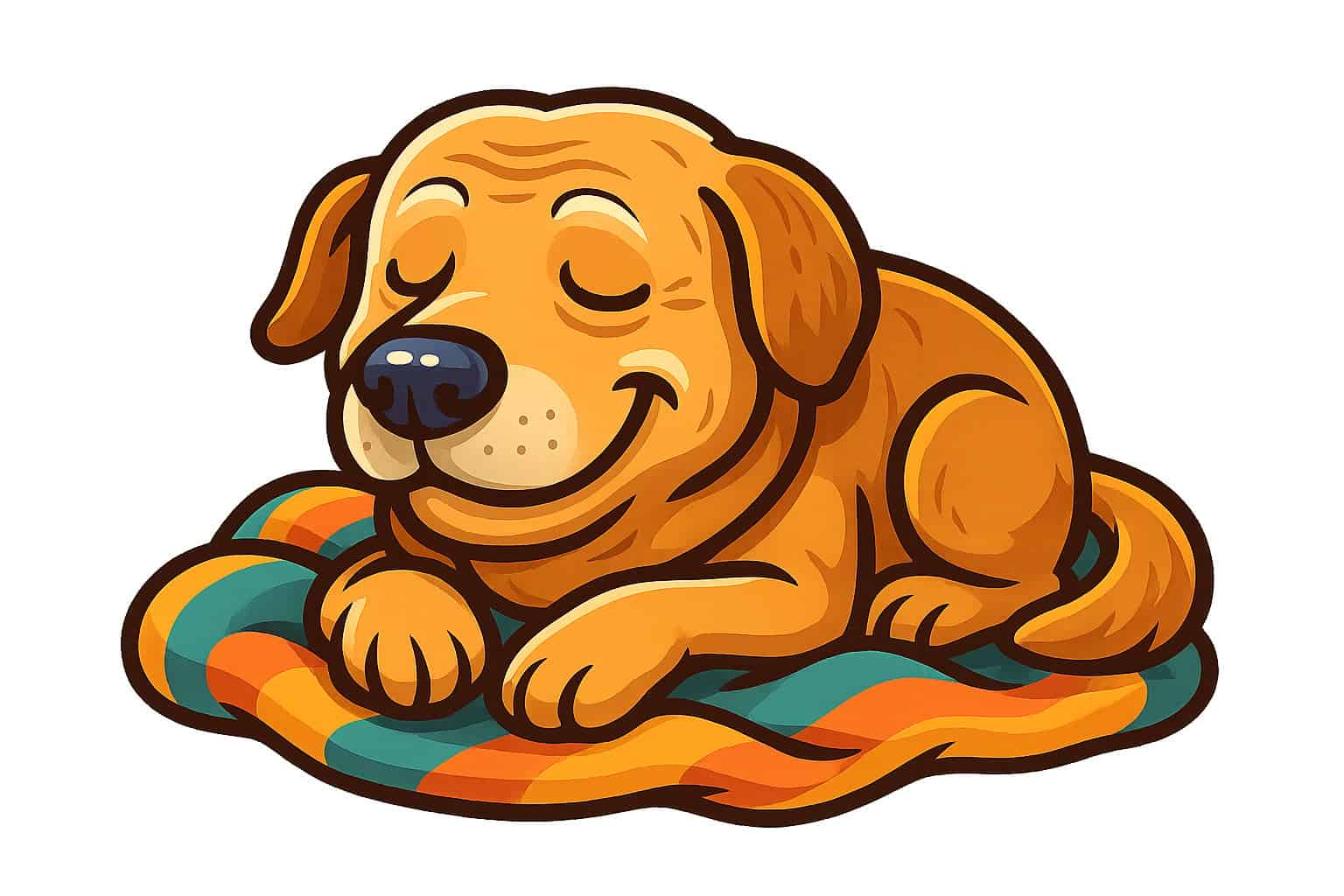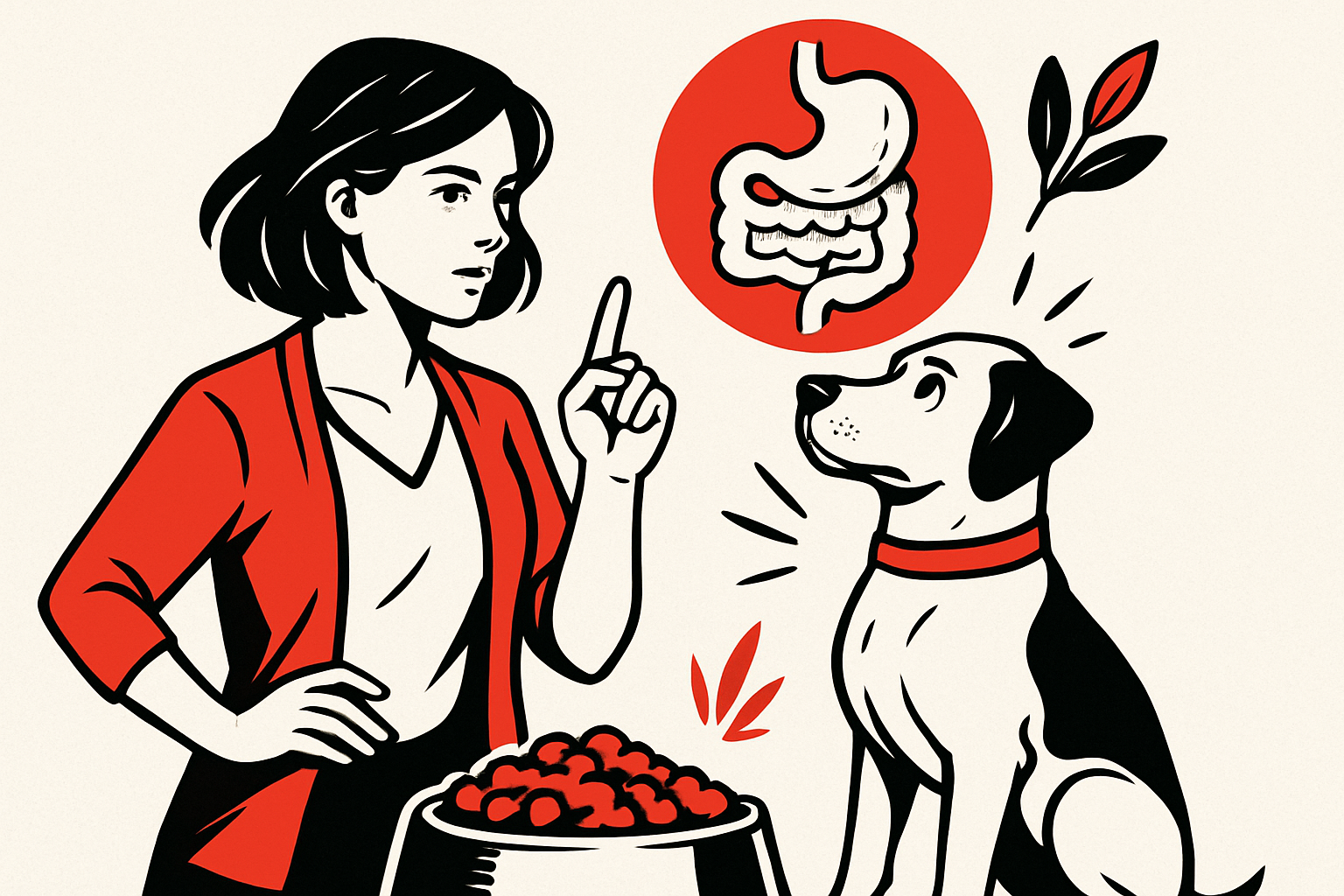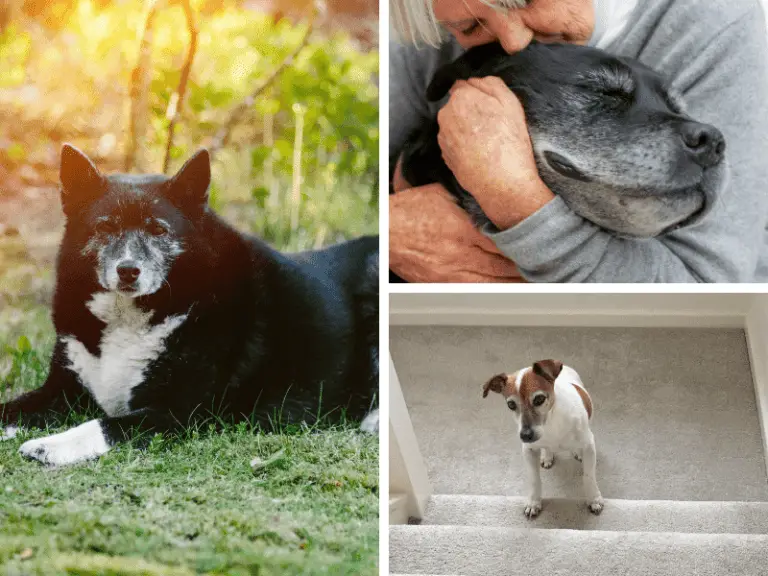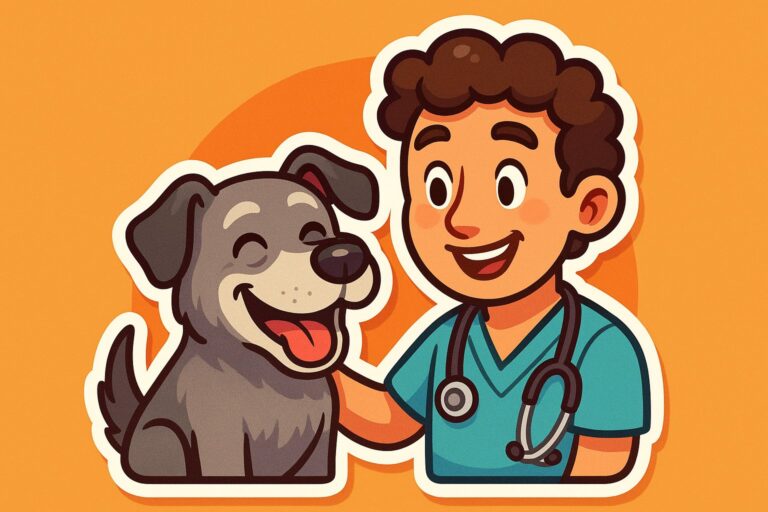How to Prevent Unnecessary Stress in Your Senior Dog

Senior dogs face all kinds of changes as the years roll by, and those shifts can pile on stress that chips away at their comfort and happiness. Like people, older dogs get anxious when their world feels unpredictable or their bodies just don’t cooperate the way they used to.
Maybe you’ve noticed your older dog pacing at night, getting clingier, or acting confused in situations that never used to faze them. These behaviors often mean your furry friend feels overwhelmed.
Understanding what triggers stress in your senior dog—and figuring out how to create a calm, supportive environment—can make their golden years so much more enjoyable. Small tweaks, like adjusting their living space or managing daily activities, can really improve how your older dog feels each day.
Stress in Senior Dogs
Senior dogs face emotional challenges that can sneak up on you. Stress shows up in ways you might not expect, often rooted in physical changes, confusion, or routines that suddenly feel off.
What Stress Looks Like in Older Dogs
Stress in your senior dog might not look the way you think. Maybe your dog paces at night when they used to sleep soundly. Some start panting more, even if the room’s cool.
Behavioral signs include:
- Excessive barking or whining
- Restlessness or trouble settling
- Hiding in weird places
- Eating less or more than usual
Physical symptoms can be subtle. Your dog might tremble or shake more than before. Accidents in the house can pop up after years of perfect house-training.
Sleep problems happen a lot. Your dog might wander around at 3 AM or seem confused about where they are.
Some senior dogs become velcro dogs, sticking to you everywhere you go. Others pull away and seem less interested in things they used to love.
Common Causes of Anxiety in Senior Dogs
As their bodies change, your senior dog’s world can feel unpredictable. Losing vision or hearing turns familiar spaces into something kind of scary.
Arthritis brings pain, making movement tough. Your dog may feel trapped if they can’t get on the couch or climb stairs anymore.
Cognitive changes mess with your dog’s memory. They might forget where their food bowl is or get lost in the backyard. That kind of confusion is stressful.
Changes in your household routine—like moving furniture, new family members, or different meal times—can throw them off.
Medical conditions like thyroid issues or kidney disease can add to anxiety. Pain from any source makes dogs feel vulnerable.
How Aging Affects Your Dog’s Emotional Health
Your dog’s brain changes with age, just like yours. The aging process wears down their ability to handle stress and process emotions.
Memory problems can make daily life confusing. Your dog might not remember eating and feel anxious about their next meal.
Tasks that were easy years ago can become tough now, and that hits their confidence. They start feeling less capable and more worried.
Sleep patterns change. Your dog might nap more during the day but feel restless at night. Poor sleep ramps up stress hormones.
If your dog can’t see or hear well, even hanging out with family or other pets can get stressful.
Create a Comforting Home Environment
Your senior dog needs a calm, supportive space that makes life easier on their aging joints and helps them relax. Simple changes to sleeping areas, noise, and daily routines can make a big difference in their comfort.
Make Sleeping Areas Cozy and Accessible
Your dog’s sleeping spot should feel like a cozy retreat. Pick a thick, supportive bed—solid foam works great for sore joints and stiff muscles.
Keep the bed away from drafts and cold floors. A spot near a wall can help your dog feel safe and warm.
Key features for senior dog beds:
- Thick foam (at least 4 inches)
- Covers you can toss in the wash
- Low sides for easy entry and exit
- Non-slip bottom so it doesn’t slide around
Keep some extra blankets handy. Warm them in the dryer and drape them over sore spots—it feels amazing to an older dog. It’s the dog version of a heating pad.
If stairs are tough, add a second bed on the main floor. Give them options so they don’t have to struggle just to get comfortable.
Reduce Overstimulation in Shared Spaces
Loud noises and a busy house can stress your senior dog way more than before. Hearing changes make sudden sounds even more startling.
Set up quiet zones where your dog can retreat when things get loud. This might be a bedroom corner or a comfy spot in the living room with their bed and a couple of favorite toys.
Ways to lower noise stress:
- Throw down rugs or carpet to muffle footsteps
- Keep TV volume reasonable
- Warn your dog before using loud appliances
- Offer a „safe room“ during parties
If you have multiple pets, make sure your senior dog can eat and rest without being bothered. Younger pets sometimes bump into them or steal food without meaning any harm.
Baby gates can help section off areas, letting your older dog see what’s happening but still have their own peaceful space.
Adjust the Household Routine for Older Dogs
Senior dogs crave routine. Surprises and sudden changes can leave them feeling anxious.
Stick to regular feeding times, walks, and bedtimes. If you usually walk at 7 AM, keep that up as much as possible.
Daily routine tips:
- Feed at the same times
- Take bathroom breaks more often
- Keep walks shorter but more frequent
- Stick to a steady bedtime
When you need to change something, do it gradually. If you’re switching food, mix the old and new together over a few days.
Put your dog’s food, water, toys, and bed on the same floor. That way, they don’t have to tackle stairs if they’re not up for it.
Offer bathroom breaks every few hours. Don’t wait for them to ask—just give them the chance. It helps prevent accidents and lowers their stress.
Recognize and Manage Triggers
Senior dogs can develop new sensitivities as they age. Spotting what makes your dog anxious—and having a plan—can really boost their comfort.
Identify Stressful Situations for Your Dog
Does your dog suddenly get nervous about things that never used to bother them? Age brings changes that make ordinary situations feel overwhelming.
Physical changes often create new triggers. Maybe your dog avoids stairs because their joints hurt. Or crowds make them uneasy if their hearing or vision isn’t as sharp.
Common stress triggers:
- Loud or sudden noises
- Changes in routine
- New people or pets
- Being left alone
- Car rides
- Grooming
Warning signs:
- Panting when it’s cool
- Pacing or acting restless
- Hiding or sticking close to you
- Shaking
- Eating less
Maybe storms work your dog up more than before. Or they bark at the doorbell now, even if they never cared in the past.
Try keeping a simple log for a week. Jot down when your dog seems stressed and what was happening right before. Patterns might pop up that you hadn’t noticed.
Navigate Changes in Family Dynamics
Family changes can really throw off a senior dog’s sense of security. Your dog depends on knowing what to expect.
New babies, roommates, or pets need slow introductions. Let your dog meet new family members gradually, and give them a quiet space to escape if things get overwhelming.
If someone moves out, your dog might look for them or seem down. Stick to regular feeding and walking times, and give them a little extra attention.
Schedule changes—like new jobs or school routines—affect your dog too. Try to keep their meals and walks consistent even as your own schedule shifts.
When guests visit, set up a calm area where your dog can relax if socializing gets to be too much. Some dogs just want to watch from a distance.
If your dog seems anxious about family changes, keep their routine steady. Small consistencies help them cope with big changes.
Handle Unexpected Visitors and Strange Noises
Senior dogs can get more sensitive to surprises. Hearing loss makes sudden sounds even more startling.
For doorbell anxiety, try playing soft background music to mask the noise. Ask family or friends to text when they’re arriving instead of ringing the bell.
When visitors come over, give your dog options. Set up a comfy spot in another room so they can take a break. Don’t force them to interact if they’d rather not.
Construction or neighborhood noise can bother your dog more now. Close curtains to cut down on visual distractions. White noise or calm music can help, too.
Some dogs feel braver with their favorite person nearby during stressful times. Others prefer space to watch from a safe spot.
If your dog has severe noise anxiety, talk to your vet about medication. Sometimes that’s the best way to help, especially during fireworks or storms.
Support Daily Routines for Stress Prevention
Senior dogs thrive on predictable schedules. Regular meals, potty breaks, gentle exercise, and plenty of rest create a foundation for their emotional well-being.
Consistent Feeding and Potty Schedules
Your senior dog’s body doesn’t process food like it used to, so regular feeding times matter more than ever.
Feed your dog at the same times every day. Morning and evening meals work for most, but some seniors do better with three smaller meals spaced out.
Potty schedules get more important as your dog ages. Bladder control can weaken, and your dog might not give as much warning.
Take them out first thing in the morning, after meals, and before bed. Add a midday break if you’re around. Some seniors need to go out every 3-4 hours.
Watch for signals like pacing, whining, or heading to the door. Don’t wait for them to ask—stick to your schedule.
If accidents happen, clean up without scolding. Your dog isn’t doing it on purpose. Puppy pads by the door can help as backup.
Gentle Exercise for Older Dogs
Exercise keeps your senior dog’s joints moving and their mind sharp. But you’ll need to tweak the routine as they age.
Daily walks are great, just keep them shorter—maybe 15 or 20 minutes. Let your dog set the pace, and if they want to sniff, let them.
Swimming works wonders if your dog likes water. It’s gentle on joints and still gives them a workout.
Skip high-impact stuff like jumping, running on pavement, or roughhousing with younger dogs. That can hurt aging joints.
Try gentle games of fetch with a soft toy—just a few feet at a time.
Mental exercise counts, too. Puzzle toys, sniffing games, and short training sessions keep their brain busy without tiring them out.
Pay attention to their energy. Some days they’ll want more activity, some days less. That’s normal.
Balancing Activity and Rest
Senior dogs sleep a lot—sometimes up to 18 hours a day. The right balance of activity and downtime keeps stress in check.
Offer comfy beds throughout your home. Orthopedic beds support aging joints, and quiet spots help them rest undisturbed.
Watch for signs they’re overdoing it. Heavy panting, extra fatigue, or limping mean it’s time to rest.
Plan active times around when your dog naturally has more energy—usually mornings and evenings. Let them nap in between.
If your dog lies down during a walk, give them a few minutes to recover. Don’t push for more activity than they want.
Create a calm space for rest. Dim the lights, keep noise down, and ask other pets to give them space.
Rest days are fine. Just like older people, senior dogs sometimes need to recharge. Adjust your plans when they need a slower day.
Promote Positive Social Interactions
Senior dogs need thoughtful, gentle guidance to keep social relationships healthy. The goal is to create calm, controlled situations where your dog feels safe and confident around people and other pets.
Introduce New Pets or People Thoughtfully
Your senior dog might feel overwhelmed by sudden introductions. Start with brief meetings in neutral spaces where your dog feels comfortable.
Let your dog watch new people from a distance at first. This gives them a chance to process things without feeling pressured.
You can decrease the distance gradually if your dog looks relaxed. Watch for loose body language and a wagging tail.
For new people:
- Ask visitors to ignore your dog at first
- Let visitors sit quietly and wait for your dog to approach
- Offer treats when your dog acts calm and friendly
- Keep first meetings short—five to ten minutes is enough
When introducing new pets, begin with separate rooms. Let them sniff each other’s scent under the door.
For new pets:
- Feed them on opposite sides of a baby gate
- Take parallel walks with another person helping out
- Watch for stress signs like panting or pacing
- End sessions while everyone still feels positive
Managing Encounters With Other Animals
Your senior dog relies on you to handle unexpected animal encounters. Dogs and cats they meet on walks or in parks can cause stress if you don’t manage things well.
Stay alert during walks and create distance if needed. If another dog approaches, check your dog’s comfort level.
Some seniors just want to avoid other animals. That’s totally okay.
Distance management tips:
- Cross the street if your dog looks anxious
- Use treats to bring their attention back to you
- Practice the “look” command before tough situations
- Keep the leash loose so you don’t add tension
At dog parks, go during quieter times. Senior dogs usually do better one-on-one than in big groups.
Watch your dog’s body language. If you see stiff posture, raised hackles, or heavy panting, it’s time to leave.
Encourage Calm Playtime
Senior dogs still love to play, but they need gentler activities. Rough play with young dogs or energetic kids can stress them out or even cause injuries.
Ideal play activities:
- Slow fetch with soft toys
- Gentle tug-of-war
- Sniffing games in the yard
- Short walks with calm, friendly dogs
Set time limits for play. Seniors sometimes don’t know when to stop, especially if they’re having fun.
Ten to fifteen minutes works for most older dogs. That’s usually plenty.
Create quiet spaces where your dog can retreat during social time. A cozy bed in a separate room gives them control over their interactions.
Keep an eye on play between your senior dog and puppies or young dogs. The energy gap can get stressful fast.
Step in if play gets too intense or one-sided.
Using Enrichment for Mental Wellbeing
Mental enrichment cuts stress by giving your senior dog something positive to focus on. Simple puzzles, scent games, and interactive toys can boost confidence and create calm, focused moments.
Simple Brain Games for Senior Dogs
You don’t need fancy stuff to challenge your senior dog’s mind. Hide treats around the house and let your dog search for them at their own pace.
It’s like a treasure hunt that keeps their brain busy. Try the “which hand” game—hide a treat in one closed fist and let your dog sniff and choose.
This gentle game exercises their problem-solving skills. Teaching new tricks works well for older dogs, too.
Simple commands like “touch” or “spin” provide mental stimulation without much physical effort. Keep training sessions short—five to ten minutes tops.
Turn mealtime into brain time. Scatter kibble on a towel or hide it in different bowls around the room.
This mimics natural foraging and makes eating more interesting.
Interactive Toys and Puzzles
Puzzle feeders are perfect for senior dogs. Start with easy designs that release treats quickly, then make things harder as your dog gets the hang of it.
Pick toys with bigger pieces that are easier for older dogs to handle. Avoid anything tiny that might frustrate stiff or arthritic paws.
Snuffle mats are great for gentle mental stimulation. Hide treats in the fabric strips and let your dog sniff and search without moving around too much.
Treat-dispensing balls work if your dog can still walk comfortably. Choose ones that roll slowly and don’t require jumping.
Supervise puzzle time, especially if your dog likes to chew or swallow non-food items. Clean toys regularly so they stay appealing and safe.
The Importance of Scent Work
Your senior dog’s nose stays sharp even as other senses fade. Scent work taps into their strongest ability and provides real satisfaction.
Start with basic scent games using treats or favorite toys. Hide them in easy spots around one room, then expand the search area as your dog gains confidence.
Essential oils like lavender can create calming scent experiences. Put a tiny drop on a cloth and let your dog sniff it—never apply oils directly to their skin or fur.
Try rotation boxes with different safe scents in small containers. Reward your dog for showing interest.
Outdoor sniffing walks count as scent work, too. Let your senior dog explore at their own pace, even if you don’t cover much ground.
Handling Medical and Grooming Needs Calmly
Senior dogs need regular medical care and grooming, but these routines can get stressful. The trick is to create calm environments and use gentle techniques.
Making Vet Visits Less Stressful
Does your senior dog start shaking the minute you pull into the vet’s parking lot? You’re not alone.
Prepare your dog before leaving home. Take short car rides that don’t end at the vet’s office to break the connection.
Bring a familiar blanket or toy to the appointment. The scent can comfort your dog.
Arrive early, but wait in the car until your appointment time. This avoids the chaos of the waiting room.
If you have two dogs, bringing both can help. The healthy dog can offer emotional support.
Practice handling exercises at home. Touch your dog’s paws, ears, and mouth gently during calm moments and reward with treats.
Ask your vet about anti-anxiety meds for especially nervous dogs. Some dogs really do benefit from mild sedatives before appointments.
Gentle Grooming Techniques
Your senior dog still needs grooming, but your approach has to change. Use softer brushes and lighter pressure.
Senior dogs often have thinner skin that bruises easily. Switch to brushes with soft bristles or rubber gloves.
Take frequent breaks during grooming. If your dog seems uncomfortable, let them rest.
Groom at home if you can. Familiar surroundings help reduce stress.
Handle paws and sensitive spots gently. Arthritis can make some positions painful.
Keep grooming sessions short. Break nail trims into several rounds—maybe two nails today, two tomorrow.
Warm the room before bathing. Older dogs get cold fast and may struggle to stay warm.
Use non-slip mats in the tub. Dogs with mobility issues need secure footing to feel safe.
Administering Medication Without Drama
Getting pills into your senior dog doesn’t have to be a battle.
Hide medications in high-value treats—pill pockets, cream cheese, or a bit of hot dog work well. Give a plain treat first, then the medicated one, then another plain treat.
Crush pills and mix with wet food if your vet says it’s okay. Some meds can’t be crushed, so always check.
Create a positive routine around medication time. Use the same spot and time each day, and pair it with something nice like mealtime or a short walk.
If your dog spits out pills, try liquid versions. Many meds come in liquid form.
Practice with fake pills when your dog feels good. Use treats to mimic pill-giving so it’s not a big deal later.
Keep medications at room temperature unless they need refrigeration. Cold pills are more noticeable and unpleasant.
Supporting Seniors With Health Challenges
Senior dogs often face health issues that need special attention. Creating supportive environments for hearing or vision loss, mobility issues, and chronic conditions helps your old friend feel safe.
Helping Dogs With Hearing or Vision Loss
Noticed your senior dog ignoring your voice lately? Hearing loss is common in older dogs and can cause confusion.
For hearing-impaired dogs:
- Use hand signals instead of voice commands
- Stomp your foot gently to get their attention through vibrations
- Flash lights on and off to signal mealtime or walks
- Always approach from the front
Vision loss can be even more stressful. Dogs depend on familiar layouts to get around.
For vision-impaired dogs:
- Keep furniture in the same spots
- Use baby gates to block stairs or hazards
- Add textured mats near food bowls and doorways
- Guide with a gentle touch instead of pulling the leash
You might notice your dog bumping into things or acting confused in new places. These are normal signs of sensory decline.
The key is to stick to routines and make small changes to help them adapt.
Managing Mobility Issues
Joint stiffness and arthritis hit many senior dogs. Getting around gets harder and can cause stress if you don’t manage it well.
Daily mobility support:
- Offer orthopedic beds with extra padding
- Use ramps instead of stairs
- Put non-slip rugs on smooth floors
- Try raised food and water bowls
Exercise modifications:
- Take shorter, more frequent walks
- Walk on grass instead of concrete
- Try swimming if possible—it’s easy on joints
- Skip high-impact stuff like jumping
If your dog struggles to get up after resting, that could mean pain. Gentle massage and warm compresses can help.
Some dogs do well with mobility aids like harnesses or booties for better grip.
Coping With Chronic Conditions
Chronic health issues like diabetes or kidney disease require steady routines. Consistent care helps keep stress low for both of you.
Creating stability:
- Give meds at the same times every day
- Keep a simple log of symptoms
- Schedule regular vet checkups every six months
- Watch for changes in eating, drinking, or bathroom habits
Comfort measures:
- Keep things calm and quiet
- Make water and food easy to reach
- Maintain comfy room temperatures
- Set up cozy resting spots around your home
Work closely with your vet and adjust care plans as things change. Sometimes what worked last month needs tweaking now.
Using Natural Remedies and Calming Aids
Natural remedies can gently ease anxiety in your senior dog without harsh side effects. Herbal supplements, calming products, and soothing sounds all help create a peaceful environment.
Herbal Supplements and Their Use
Ever wondered if nature could help calm your senior dog? Some herbal supplements reduce anxiety safely and effectively.
Chamomile is a popular choice. Offer it as a cooled tea or in capsule form—it works for dogs much like it does for people, bringing a gentle, relaxing effect.
Valerian root has a long history of promoting calmness. The smell isn’t great, but the results often make it worth it.
L-theanine, from green tea, relaxes dogs without making them sleepy. It’s especially helpful for daytime anxiety.
Always check with your vet before starting any supplement. Some herbs can interact with meds your dog already takes.
How Calming Collars and Sprays Can Help
Maybe you’ve seen calming collars and sprays at the pet store and wondered if they work. For many senior dogs, they really do.
Pheromone collars release scents that mimic the natural pheromones mother dogs produce. These signals help your dog feel safe.
Calming sprays work similarly but give you more control. Spray them on your dog’s bed, in the car, or wherever your dog spends time.
Essential oil products designed for dogs can also help. Look for ones with lavender or bergamot, but avoid using human products—they’re too strong.
These products are natural and won’t interfere with medications your dog already takes.
Safe Use of White Noise and Soothing Music
Sound can calm dogs just like it does people. Even if your senior’s hearing isn’t what it used to be, the right sounds can still comfort them.
White noise machines block out scary noises like fireworks or thunderstorms. They create a steady, predictable background.
Classical music has been shown to relax dogs in both shelters and homes. Try soft piano or strings when your dog seems stressed.
There’s even music designed just for dogs, using frequencies and rhythms they find soothing.
Keep the volume low—older dogs might be sensitive. Start with short sessions to see how your dog responds before using sound therapy for longer stretches.
When to Seek Professional Support
Sometimes your senior dog’s stress just gets to a point where you can’t manage it at home. It might even point to a deeper health issue.
Professional help from behaviorists, veterinarians, and specialists can really change your dog’s comfort and quality of life. There’s no shame in asking for backup when your dog’s happiness is at stake.
Working With a Canine Behaviorist
If your senior dog suddenly acts out, gets fearful, or starts behaving in odd new ways, a canine behaviorist can help figure out what’s going on. Maybe your once-friendly dog now snaps at visitors, or they’ve started hiding under the bed for hours.
A Certified Applied Animal Behaviorist (CAAB or ACAAB) focuses on why dogs act the way they do. They’ll watch your dog’s patterns and come up with a plan that’s actually tailored to your situation.
Signs you need a behaviorist:
- New aggression toward people or other pets
- Excessive pacing or restlessness
- Destructive behavior that just started
- Extreme separation anxiety
The behaviorist will team up with you to change your dog’s environment and daily routine. Sometimes they’ll suggest training tweaks or environmental changes you probably wouldn’t have thought of.
How Your Vet Can Help With Anxiety
Your veterinarian can prescribe anti-anxiety meds that are safe for older dogs. These aren’t just human drugs—they’re made for dogs and their specific needs.
Some older dogs do better with supplements like L-theanine or melatonin. Your vet will figure out the right amount based on your dog’s weight and health.
Common anxiety treatments vets offer:
- Prescription anti-anxiety medications
- Natural calming supplements
- Pheromone diffusers or sprays
- Special diets that support brain health
Don’t beat yourself up for using medication to help your senior dog’s anxiety. If you take medicine for your own stress, why not let your dog get some relief too?
Your vet might also want to run blood work to rule out any hidden medical problems that could look like anxiety.
Recognizing When Stress Is a Sign of Illness
Sometimes, what looks like stress is actually your dog’s way of telling you something hurts. Senior dogs, especially, tend to hide pain.
You might notice your dog gets clingy, paces at night, or loses interest in things they once loved. If that happens, it’s time to call your vet.
These changes could mean arthritis, dental pain, or some other health issue creeping in with age. It’s frustrating—dogs can’t just say, „Hey, I’m hurting.“
Red flag behaviors that need immediate vet attention:
- Sudden changes in eating or drinking habits
- New bathroom accidents in the house
- Excessive panting when it’s not hot
- Difficulty getting up or lying down
Your vet will check for anything causing discomfort. These days, pain management for senior dogs is so much better than it used to be.
Treating the root problem often helps those odd behaviors disappear.






